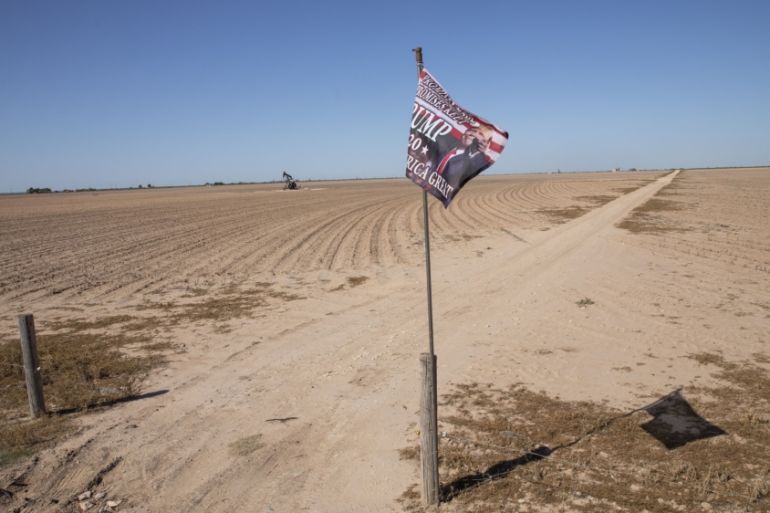Oil settles lower on fuel demand worries due to COVID-19 uptick
New coronavirus hotspots are emerging in China and the US as US crude inventory rises again threatening another crash.

Oil prices settled lower on Wednesday on fuel demand worries due to an uptick in coronavirus cases, with emerging hotspots in China and the United States, and as US crude stocks grew again, taking commercial inventories to another all-time high.
Global benchmark Brent crude settled down 25 cents, or 0.6 percent, at $40.71 a barrel. US West Texas Intermediate (WTI) fell 42 cents, or 1.1 percent, to settle at $37.96 a barrel.
Keep reading
list of 3 itemsOil surges 3 percent as IEA boosts oil demand forecast for 2020
Crash! US crude futures turn negative for first time in history
US crude inventories rose to a record high last week for a second straight week, reaching more than 539 million barrels. Conversely, distillate stockpiles fell following weeks of significant builds, government data showed.
The coronavirus continues to spread in parts of the US, while flights were cancelled and schools were shut in Beijing to head off a new virus outbreak in the Chinese capital.
“Today’s slide seems to be related to the build we saw in crude stockpiles and ongoing worries about demand due to the coronavirus,” said Gene McGillian, vice president of market research at Tradition Energy in Stamford, Connecticut. “The market is trying to find whether it has enough strength to resume its rally that took us above three-month highs.”
US fuel demand, as measured by product supplied, is down 20 percent over the past four weeks from a year earlier, the government said.
US crude production fell by 600,000 barrels per day (bpd) last week to 10.5 million bpd, its lowest since March 2018. Some of that was due to Storm Cristobal, which shut more than one-third of US offshore output.
However, US shale producers are expected to restore roughly half a million bpd of crude output by the end of June, according to crude buyers and analysts, amounting to a quarter of what they shut since the coronavirus pandemic cut fuel demand and hammered oil prices.
Such a swift rise in the US production would complicate efforts by top producers Saudi Arabia and Russia to encourage global allies to fulfil their pledges to make record production cuts.
They, along with allies in a group known as OPEC+, agreed to big cuts in April to balance oil supply to prop up prices, and anticipated similar economic cuts by the likes of the US as well.
US producers cut supply by roughly 2 million bpd but larger producers are reopening the taps in Texas, as well as in expensive shale basins in North Dakota and Oklahoma.
Fracking activity tracker Primary Vision estimates as much as 500,000 bpd of production will return to the market by month-end, while Rystad Energy estimates 400,000 bpd could be added to the market between June and August.
“Some of the bigger guys that we work with are starting to turn everything back on,” said Joshua Wade, an oil marketer in Oklahoma, who works with producers to transport barrels and buys lease volumes.
Producers are also pumping oil out of storage, which filled when demand plummeted as billions of people worldwide stopped travelling due to lockdowns to slow the spread of coronavirus.
Much of the declines in output came from shale wells that were choked back but not shut-in completely, several shale company executives said.
“We were able to shut in thousands of wells with really minimal time and effort. And we can bring those back on with really minimal time and effort, too,” EOG Resources Inc Chief Operating Officer Lloyd Helms said at a Tuesday industry conference.
Diamondback Energy Inc focused on curtailing volumes rather than fully shutting wells, Adam Lawlis, vice president of investor relations, said in a statement.
About 8,000 bpd of the 10,000 bpd of oil that shale producer Devon curtailed came from choking back wells or slightly delaying wells.
“We’re in the process of bringing all of that back on,” Hager said.
But the increase in production may not last, analysts said. North American oil companies have slashed spending by 35 percent, and US rig counts have dropped to a record low. Since shale well output declined by more than 60 percent after the first year, the reduced spend on drilling will weigh on shale production over the long term, sources at shale companies said.
“Oil going to $40 for a fleeting moment isn’t going to be enough for some of our stronger operators to say, ‘OK, I’m going to just turn the turn the tap on.’ They need to see it be sustainable,” Nicholas O’Grady, CEO of Northern Oil and Gas, said.